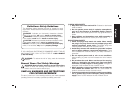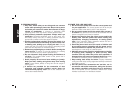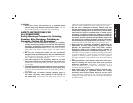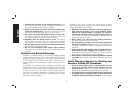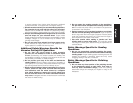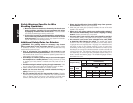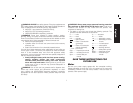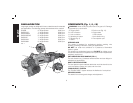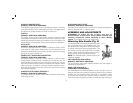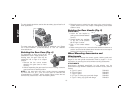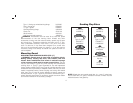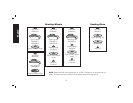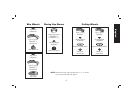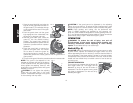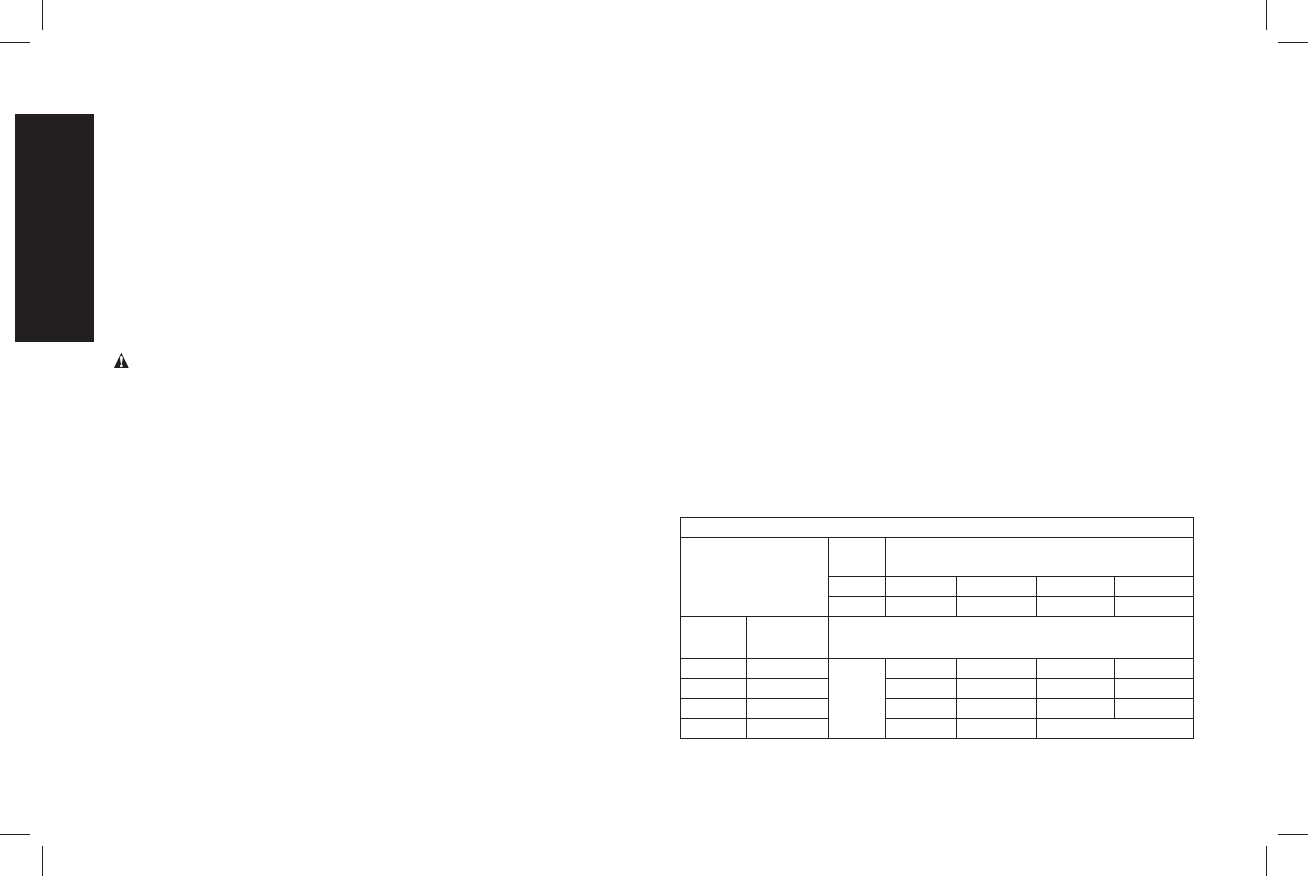
Safety Warnings Specifi c for Wire
Brushing Operations
a) Be aware that wire bristles are thrown by the brush even
during ordinary operation. Do not overstress the wires
by applying excessive load to the brush. The wire bristles
can easily penetrate light clothing and/or skin.
b) If the use of a guard is recommended for wire brushing,
do not allow any interference of the wire wheel or brush
with the guard. Wire wheel or brush may expand in diameter
due to work load and centrifugal forces.
Additional Safety Rules for Grinders
WARNING: The grinding wheel or accessory may loosen
during coast-down of the tool when shut off. If grinding wheel
or accessory loosens, it may dismount from the machine and may
cause serious personal injury.
• Use of accessories not specified in this manual is not
recommended and may be hazardous. Use of power boosters
that would cause the tool to be driven at speeds greater than its
rated speed constitutes misuse.
• Use clamps or another practical way to secure and support
the workpiece to a stable platform. Holding the work by hand
or against your body leaves it unstable and may lead to loss of
control.
• Avoid bouncing the wheel or giving it rough treatment. If this
occurs, stop the tool and inspect the wheel for cracks or flaws.
• Always handle and store wheels in a careful manner.
• Never cut into area that may contain electrical wiring or
piping. Serious injury may result.
• Do not operate this tool for long periods of time. Vibration
caused by the operating action of this tool may cause permanent
injury to fingers, hands, and arms. Use gloves to provide extra
cushion, take frequent rest periods, and limit daily time of use.
• Direct the Dust Ejection System (DES) away from operator
and coworkers. Serious injury may result.
• When the gear case grip is properly installed, the use of the side
handle is not required.
• When not in use, place grinder on a stable surface where it
will not move inadvertantly, roll or cause a tripping or falling
hazard. Serious personal injury may result.
• Air vents often cover moving parts and should be avoided.
Loose clothes, jewelry or long hair can be caught in moving parts.
• An extension cord must have adequate wire size (AWG
or American Wire Gauge) for safety. The smaller the gauge
number of the wire, the greater the capacity of the cable, that is
16 gauge has more capacity than 18 gauge. An undersized cord
will cause a drop in line voltage resulting in loss of power and
overheating. When using more than one extension to make up the
total length, be sure each individual extension contains at least the
minimum wire size. The following table shows the correct size to
use depending on cord length and nameplate ampere rating. If in
doubt, use the next heavier gauge. The smaller the gauge number,
the heavier the cord.
Minimum Gauge for Cord Sets
Ampere Rating
Volts
Total Length of Cord
in Feet (meters)
120V 25 (7.6) 50 (15.2) 100 (30.5) 150 (45.7)
240V 50 (15.2) 100 (30.5) 200 (61.0) 300 (91.4)
More
Than
Not More
Than
AWG
0 6 18 16 16 14
610 18161412
10 12 16 16 14 12
12 16 14 12 Not Recommended
English
6





